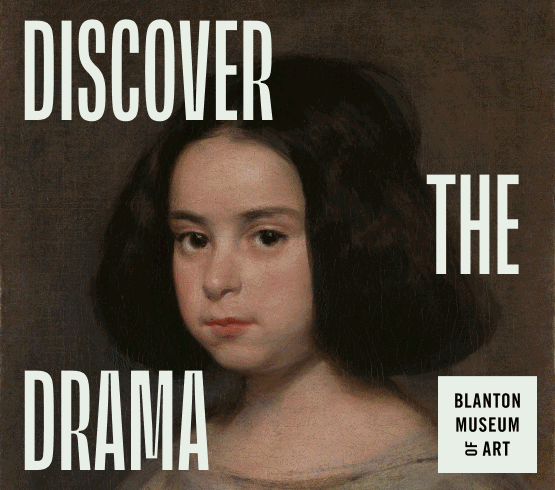“Every person is like a novel. We all have a story.” Sedrick Huckaby says. “I’ve never met a boring person.” He’s explaining how he chose the subjects of his eponymous exhibition, on view at the Blanton Museum of Art in Austin May 29 – Dec. 5. The Fort Worth-based artist is known for his gestural portraits, which capture the expression and thus, the inner life, of his subjects. “I don’t know how I choose,” he says. “Sometimes it’s the idea that chooses them.”
This last subject raises eyebrows amid the art world. Huckaby is the only artist to have painted Mr. Bush from life, and the Blanton show is the first time these images will be on display. “I don’t know what to expect, to be honest with you,” he says. “He’s been painting wounded soldiers…immigrants. They [critics] are dragging him through the mud.” Although any representation of the former president will inevitably have some political import, “he is forever tied to his history as a politician,” and Huckaby does not think of them on those terms. “I think it’s going to tell us more about us and the way we understand people than it says about him,” Huckaby explains. “Human beings are complex. There’s a way that people want to see things. We want to see right or wrong, but I don’t think life is that way.” Which is why the artist emphasizes the painting’s title, George Walker Bush. “I used his whole name on purpose; nobody knows him as Walker.”
This collaborative spirit infuses Huckaby’s works as a painter and an educator. He speaks frequently of his students at the University of Texas at Arlington. Currently, Huckaby and lauded Dallas painter Riley Holloway (a former student) are collaborating on an exhibition for Bode Projects in Berlin. “We recognized that we deal with similar things,” Huckaby says. “We are fine-tuning it [and] moving with the bend of what we naturally do.” His students also inspired Los Soñadores, the family portrait grouping featured in the Blanton show. “Normally, a portrait like that would be named for the family. At the time when I made that piece, a lot of students were having issues with family members being deported.” Huckaby depicts them grouped, but broken into separate frames, “different people occupying different canvases”—a simple but effective visual device to refer to their separation.

1 ⁄4
Sedrick Huckaby, Sonadores (Three Pieces), 2018, oil on canvases, overall: 72 x 72 in., The Harlan R. Crow Family, photo James Wilson.

2 ⁄4
Sedrick Huckaby, George Walker Bush, 2017, oil on canvas on panel, 48 x 54 in., The Harlan R. Crow Family, photo Justin Clemons.

3 ⁄4
Sedrick Huckaby, A Love Supreme: Summer, 2001–2009, oil on canvas, 92 x 240 in., photo courtesy of the artist.

4 ⁄4
Sedrick Huckaby, Filthy Rags of Splendor, 2011, oil on canvas on panel, 108 x 108 in., photo courtesy of the artist.
—CASEY GREGORY




